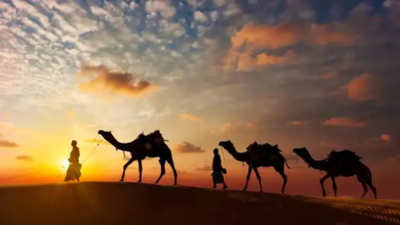
On March 30, 1949, four princely states — Jaipur, Jodhpur, Bikaner, and Jaisalmer — joined hands to form Greater Rajasthan. The event, officiated by Sardar Vallabhbhai Patel at Jaipur’s City Palace, marked a near-complete unification of Rajputana and laid the foundation of modern Rajasthan. Since then, March 30 has been celebrated as Rajasthan Day .
This year, the Bhajan Lal Sharma-led BJP govt has announced a calendar shift — Rajasthan Day will now be celebrated annually on Chaitra Shukla Pratipada , the first day of the Hindu calendar. Coincidentally, in 2025, that falls on March 30 — but in future years, the date will vary. In 2026, for example, Chaitra Pratipada will fall on March 19.

Justifying the change, Sharma said the date aligns with India’s traditional calendar and reflects Rajasthan’s Sanatan cultural heritage . He cited Sardar Patel’s 1949 speech noting that the foundation of Greater Rajasthan happened on Varsha Pratipada (the New Year in Vikram Samvat 2006), which coincided with March 30 that year. The state government has earmarked Rs 25 crore for this year’s celebrations and argues that marking the day by the Indian calendar restores cultural continuity.
Critics say the change politicises a historical event. Historian R S Khangarot warns that it dilutes the historical accuracy of March 30, 1949 — a date etched in records as the day Rajasthan was officially formed. “Facts must remain facts,” he said, adding that using a movable date risks distorting public memory of the actual event.
The Rajasthan Board’s Class X history textbook also affirms March 30, 1949, as the date when Rajasthan was officially named and unified. The change has triggered a political row, with the opposition Congress accusing the BJP of pushing an RSS-backed cultural agenda. Leader of Opposition Tikaram Jully called the move “unnecessary saffronisation,” asking if similar shifts would be proposed for Independence Day or Republic Day.
“Rajasthan Day is a political and historical event, not a religious festival,” he said. The decision has roots in the long-standing campaign of the Navvarsh Samaroh Samiti (NSS), an Rashtriya Swayamsevak Sangh-aligned body established in 1952. Since 2001, NSS has lobbied successive governments to mark Rajasthan Day according to the Vikram Samvat calendar, claiming historical evidence that Patel’s ceremony coincided with Chaitra Pratipada.
Supporters of the move, including Sanskrit scholars and govt officials, argue that the Vikram Samvat is a broadly Indian calendar, used not only by Hindus but also by Jains, Buddhists, and Sikhs. They contend that recognising this system for a state event enhances India’s civilisational identity. At the heart of debate is the question — is Rajasthan Day a historical milestone or a cultural celebration? And must the two coincide? Get the latest lifestyle updates on Times of India, along with Navratri Wishes , Eid Messages and quotes !.














